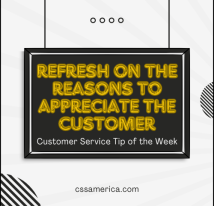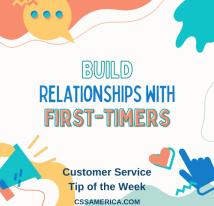Situational service requires some advanced engagement skills. It involves seeing each situation independent of any others, reading the moment, and changing on the fly to create the best possible customer experience and outcomes. So, what are some keys to situational service? Keep these guiding principles in mind:
Start Open-minded: When the customer engages you, avoid assumptions about them and their situation. Don’t let the first impression cloud what might be the deeper issue or need, the background of the situation, the person themselves. It’s more effective to start by being open, and then narrow the focus after gathering information; it’s less effective to start with a preconceived notion, and then have to later backtrack or restart the conversation.
Gauge the Emotion: While we focus on words, since that conveys much of the specifics of a situation, the emotions can convey how they feel about the issue or need. Note in their tone and body language, specifically, how they feel so that you can use that information to determine how to handle the situation.
Uncover the Urgency: Determine whether time is a concern, whether that’s in-the-moment or for the final resolution. That time consideration will help you to understand their feelings better, but it will also help you to understand whether to respond by reiterating timing and next steps, or to focus more on their feelings and solution options.
Adjust to the Situation: The first 3 guiding principles ensure you get the information you need (the facts, their emotions, and time considerations) to handle the situation most effectively. Now, adjust. Settle them down first, addressing any anxiety, anger, confusion, or upset with the right technique for the emotion, or move directly to the issue and solutions if the negative emotions aren’t present. Be patient if they care more about the conversation and the process, or quickly get to the point if there’s urgency involved.
When you’re engaged with the customer, get the facts, gauge the emotions, and clarify times. Then focus on providing the best service for the situation.
To excel in service, develop your ability to change on the fly.
Signup for FREE Tips! Contact Us More Resources for You Visit Our Home Page
























